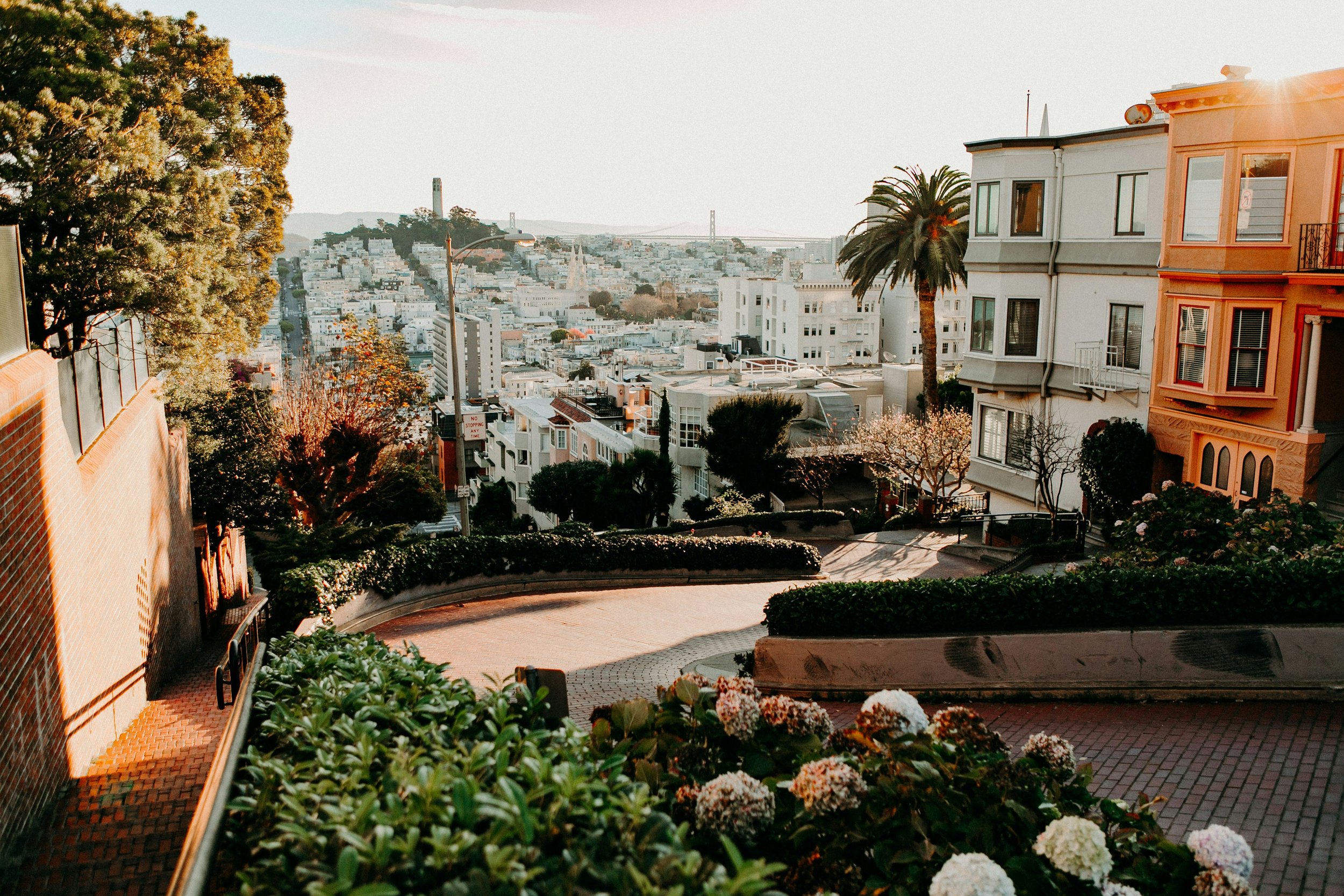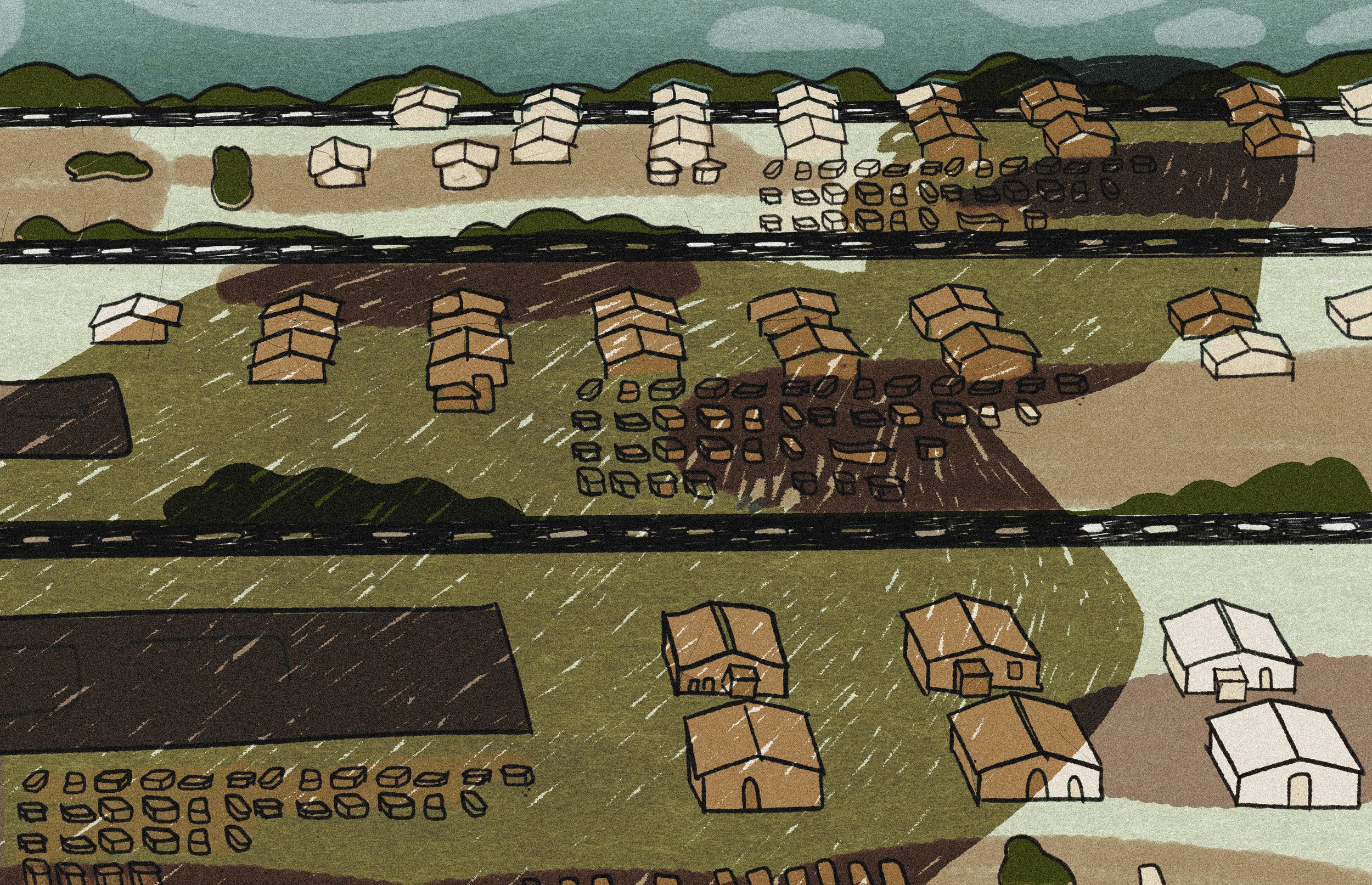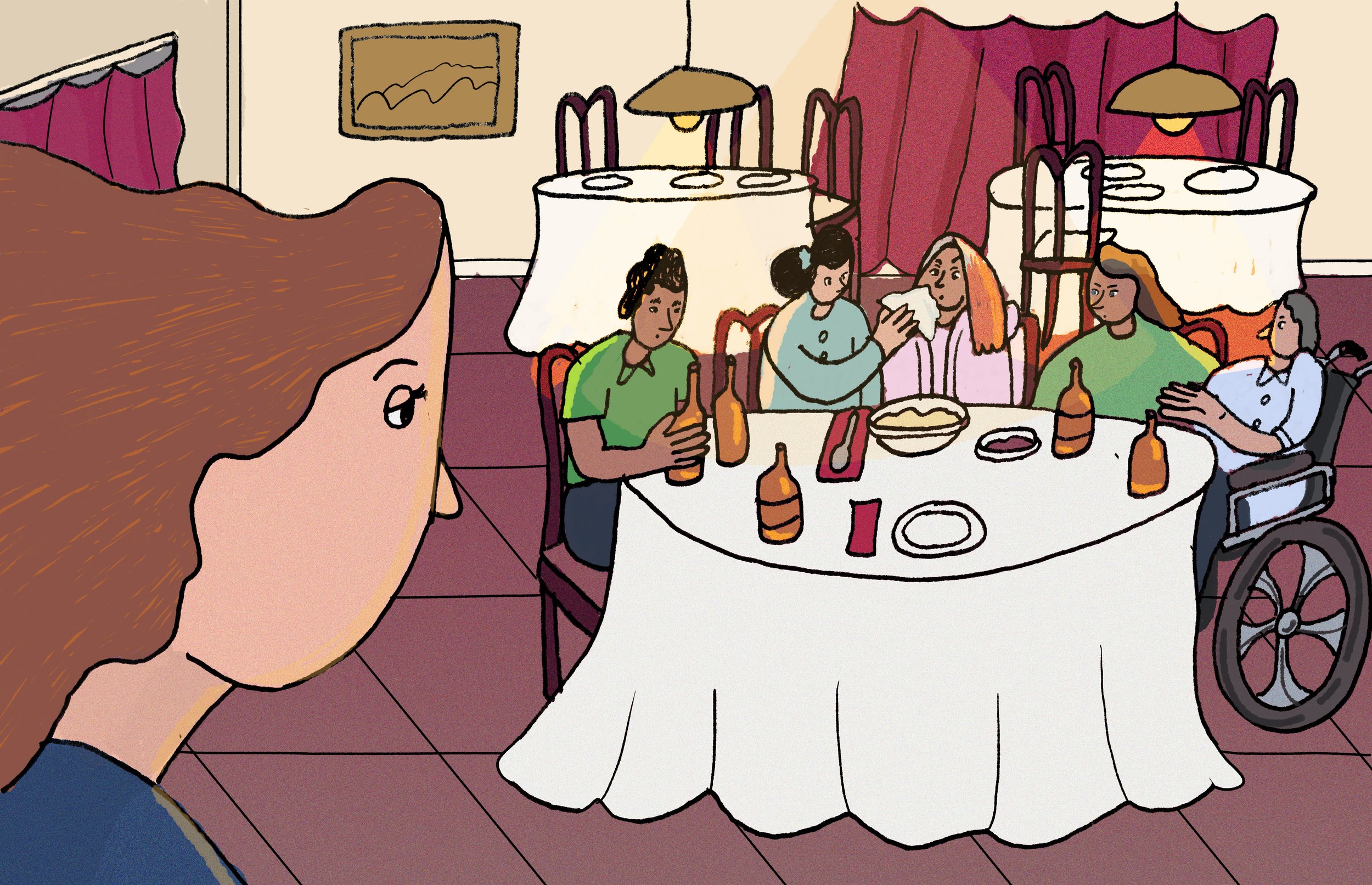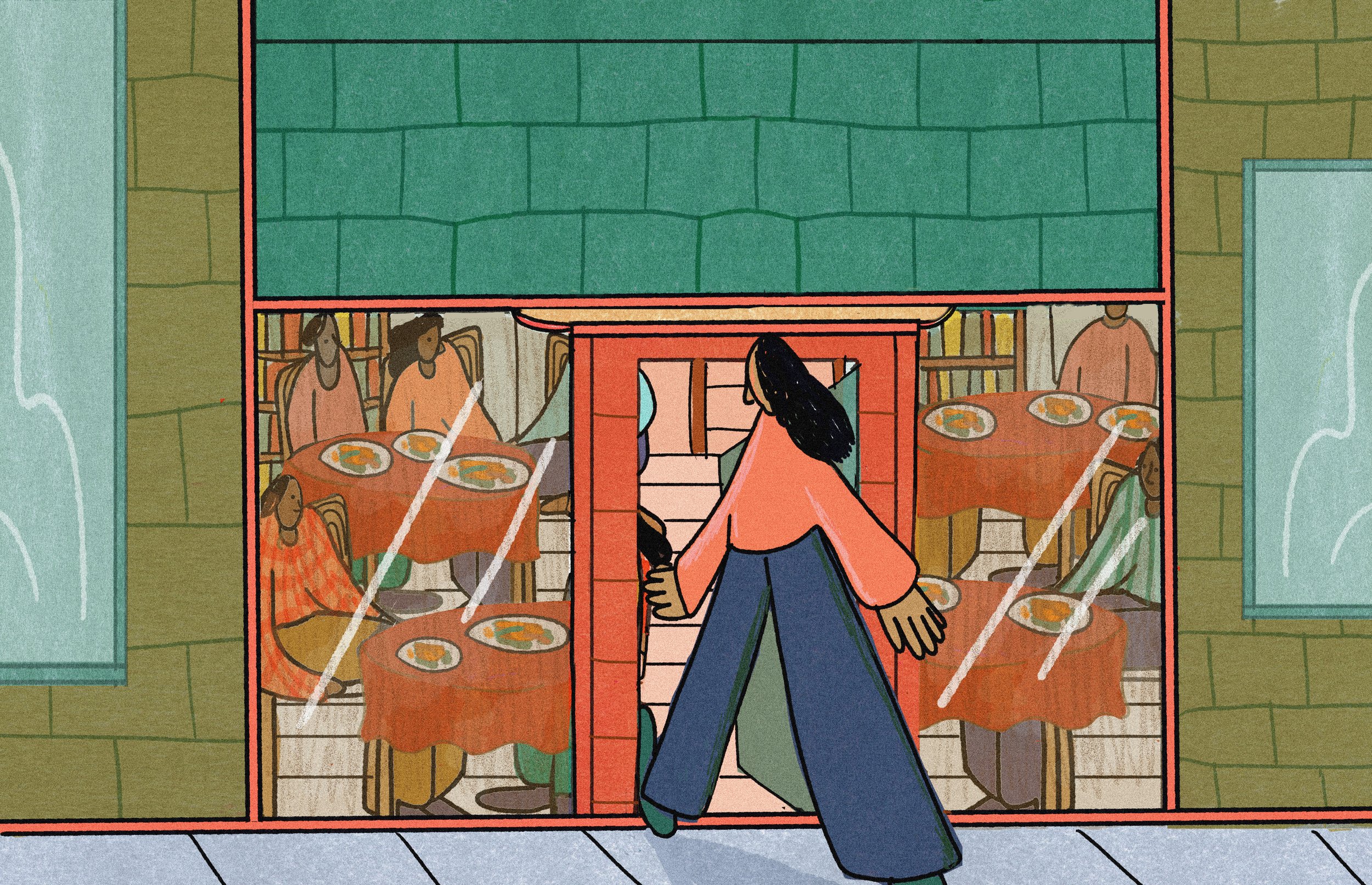Goodbye to San Francisco, the City that Can't Be Left

San Francisco began, for me, with anticipation. Every summer when I was a child my family would drive there to visit my grandparents, a two-day trip that for my brother was hell, and for me was a socially acceptable way to listen to music and daydream for hours on end. San Francisco would bloom in my imagination on that drive, detail by detail: the cotton-candy houses, the steel-toed street punks. It was all such a vivid contrast from our small town in British Columbia, where the houses were off-white or poop-brown, and punks were just pimply kids in Misfits shirts. I loved the feeling of San Francisco getting closer.
I would live there one day: This was a sturdy truth that lived inside me, just under my sternum. I would live in San Francisco and be a writer. It’s not an original story, the way a city beckons to a small-town kid, but SF wasn’t just any city. Its history glowed in its preserved Victorians and various shrines to the Sixties, not to mention my parents’ stories from their youth there (beatnik cafes! Hendrix at the Fillmore!)—but I also knew it to be a beacon of modernity, to the extent that a 12-year-old knows anything about modernity (Apple computers? Gay rights!). San Francisco seemed unique in the way it looked backward and forward at once, like a catapult bending into the past only to fling chunks of it into the future. It learned from its past; its beatnik history shaped those modern gay rights.
In my memory we were always listening to the same song as we crossed the Bay Bridge into the city, though this probably only happened once or twice. It was the opening track of the one cassette tape my whole family enjoyed, The Nightfly, Donald Fagen’s 1982 solo album. (Random, I know, but doesn’t every family have an album like this?) The song is called “I.G.Y.” because Fagen likes to be difficult, but you probably know it by the snappy, radio-friendly chorus: “What a beautiful world this will be / What a glorious time to be free.”
I didn’t get the irony of the song. I didn’t get that it was a condemnation of American exceptionalism and mid-century optimism. The song was about me, because everything was about me. It was about my future in the city splayed out before me, when I would put my pencil to paper in the same buildings where legends fought for art and justice, enjoying the more perfect union they would surely have built by then. What a beautiful world it would be!
*
When I was 24 years old, after brief stints in LA, Berkeley, and New York, I finally moved to San Francisco. I had acquired the degrees, the experiences; I was ready to be a writer now. I arrived in 2004 with two small suitcases and a heavy laptop.
The San Francisco that welcomed me was nothing like the one I’d anticipated. It was tiny, for starters; I could ride my bike across the whole thing in an hour. It was easy, cozy, shrunk to fit my exact shape. And I relaxed into it. A certain itch I’d felt my entire life—the itch of anticipating the next thing, of wondering what was on the other channel—lifted from my skin. Maybe I’ll just enjoy this place for a while, I thought.
The laptop went onto a shelf. I answered an ad to be a trend researcher, a job that turned out to be every bit as delightful and ridiculous as it sounds. I met a guy on the bus who introduced me to dozens of people, maybe hundreds, in a matter of weeks. We went to dance nights and indie rock shows and dive bars. We competed for cabs on Mission District sidewalks at 2 a.m., then piled in as many people as could chip in a few bucks—one of whom often gave the driver a new destination, sending the whole carful to Japantown for karaoke, or a Guitar Hero afterparty, or one of several now-shuttered 24-hour diners like Bagdad Cafe, where we would dip french fries in milkshakes and gossip about the night.
“Loneliness was a memory to me, as unthinkable here as snow.”
It was already expensive back then, but workarounds were easy to find. I piggybacked into rent-stabilized apartments of friends, lovers, and Craigslist strangers; my rent hovered around $600 throughout the aughts. I ate at cheap Mexican restaurants where the margaritas came in pitchers and a $9 plate of enchiladas could fill me up for a whole day. Weather never had to be considered, as it mostly consisted of various shades of white—the kind that stayed high in the sky, or the kind that dampened your sweater and dotted your glasses—except for a handful of days in October, when it would become very warm and everyone would freak out and there would be no working, no cooking, only tall cans in Dolores Park until dark. I ran into people I knew everywhere I went, at coffee shops and shows and the laundromat on Monday nights.
It would’ve been a perfect time to write, but writing demanded a degree of loneliness I could never achieve. Loneliness was a memory to me, as unthinkable here as snow. I had the rest of my life to be a writer, right?
*
I won’t belabor what happened to San Francisco in the 2010s. The iconic skyline was swallowed by tech-company towers; buses multiplied in the streets to shuttle workers to Silicon Valley campuses; rents doubled, then tripled. City government incentivized the tech industry and disincentivized basically everyone else. Friends fled for Portland, Austin, New York. The catapult I’d envisioned as a kid seemed abruptly naive. If it ever existed, it was being toppled by stampedes of young people running at the future as fast as their squishy Allbirds sneakers would let them.
It wasn’t all terrible. Novelty was in the air: We beta-tested fun apps, we laughed at the first driverless cars. We sipped cereal-washed cocktails before they became ubiquitous and damn if they weren’t delicious. But even at my old favorite haunts in the Mission, it was like an invisible drain had opened in a corner and let all the energy out. We used to shake talcum powder on the floor of these bars, the better to slide and stomp our feet to old soul records; now we perched on stools nailed into those dancefloors and took pictures of our drinks.
“But this was not the era for art. Not for a mother in San Francisco.”
When I became a mother, even the novelties lost their appeal. I had leveled up to a brand strategy career, heavy on stress and travel, and my husband worked as a designer at a healthcare startup, but our combined income still couldn’t buy us a middle-class life in the city. We lived in a rented apartment with a wonky heater and a railroad door between us and our kids—champagne problems, I know. It was an apartment we were lucky to have and could never, ever leave. My husband was born and raised in the Bay and wanted to stay. My parents had moved back from Canada into their inherited childhood home, and we relied heavily on them and my in-laws for help with the kids.
Inconveniently, I was finally ready to write. Ideas and characters crowded my head. “The rest of my life,” I felt suddenly certain, had arrived. But this was not the era for art. Not for a mother in San Francisco. I had to always be moving—hustling for money, circling for parking, scrolling Redfin for a cramped home we might just barely afford. I had to be connected online, for work and playdates and desperately needed parenting advice. Pressure seeped into our home like the chill through our wavy-glass windows. I felt claustrophobic and unshakably cold. A conviction germinated inside me, growing bigger and louder until I confessed it to my husband: “San Francisco is keeping me from being a writer.”
*
Saying goodbye felt like hollowing out my heart with a grapefruit spoon. It was leaving the people that made it painful—our family, our best friends turned pandemic pod. The city itself was easier to leave; by this point, the mere sight of a cotton-candy house prompted a rush of bitterness and a lust for freedom.
But on one of our last days, I drove to the U-Haul store on Valencia and Duboce to buy moving boxes and felt bowled over by nostalgia. Maybe it was an ancestral haunting, since my grandmother had waitressed at that U-Haul store when it had been a diner in the 60s; maybe it was because I rarely had cause anymore to go to the Mission District, that playground of my twenties. Whatever the reason, I felt inspired to keep driving down Valencia, and nearly every block served up a fresh memory. I saw my smoother-skinned self erupting into laughter in the front booth at Puerto Alegre, bursting red-faced through the doors of Elbo Room after last call. I saw her looking reflectively out of the second-floor window of an apartment where some friend of a friend had once thrown a party. Part of me hated that girl in the window. Her ignorance, her stupid frivolity. She should have been writing. She should have been paying attention to what they were doing to her city right under her nose. But another part of me wanted to be her again—to be so present, so fully alive in her body. I felt a startling urge to dip back into that part of my past, to find some way to fling it into my future.
*
We moved to Portland, Oregon. In our new neighborhood, history seemed to have rewound itself, at least by a few years: There were no driverless cars or Teslas; people owned their homes; there was an actual video rental store down the street. My husband worked remotely and I got a less stressful, lower-paying job. In the evenings, I wrote a novel inspired partly by the SF of the aughts, brimming with nostalgia for sweaty dance parties. What a joy it was to try to capture the way that era felt, the way affordable enchiladas and making eye contact in public felt. I sold the manuscript to a major publisher and the film rights to A24.
There is a tidy ending here: I spent years in San Francisco being young and present, not realizing the place was becoming inhospitable to art-making; by leaving, I was able to turn those years into art. This tidy ending would be true.
But something else is also true. The things I hated about the new SF—those tech towers and slick buses—were not nearly as insidious as what was being built inside them. I can see that now. I can see that the sweaty dance parties of the aughts were forever cooled by the arrival of the iPhone, when our heads collectively tilted downward in one swift motion and never really came back up. I can see how social media paved the way for DOGE, how Siri became generative AI. The effects of these products on our environment and well-being cannot be outrun by a change in geography. The effects of these products are just the effects of capitalism—of a system that, left unchecked, makes life incrementally shittier year by year for most of its citizens. This is the other, darker ending: By moving out of the belly of the beast, I was able to delay its surge long enough to make a work of art. I was able to buy myself some time. But how much?
I recently listened to that old Donald Fagen song again, and the irony was a sledgehammer in my middle-aged ears. Fagen sings about a futuristic utopia in which we will have “more leisure for artists everywhere.” We will have endless conveniences. We will have “a just machine to make big decisions / programmed by fellas with compassion and vision.”
My breath caught at this line. These “fellas” are no longer theoretical: We know their names and their faces and the rotten cores of their souls. Many of them made their fortunes by the San Francisco Bay. “We’ll be clean when their work is done,” Fagen sings, his voice pained and wry. “We’ll be eternally free and eternally young. What a beautiful world this will be!”
These days, I am careful with my anticipation. I know not to sink too deep into it, because I am too old to spend my life itching for what’s next; and I know not to avoid it altogether, or I might get blindsided by change. I also know that change, if we don’t fight hard, is unlikely to benefit the bulk of us.
My husband still has a job, for now, though he is required to outsource all the parts of it he loves to AI. He is expected to deliver his designs five times faster and ten times cheaper than he did a year ago. My novel has already been eaten by the learning machines, and I am working on the next one at a slightly frenzied pace, no longer so sure I have the rest of my life to be a writer. I do know I am lucky to have made money off my art at all. And I don’t know how this latest tech revolution will unspool; I don’t know what protections or compensations we might be able to fight for and win, what legitimate advancements might emerge along the way. But I have to admit, I am feeling it again: that old San Francisco chill seeping through my windows. Sometimes it feels like we never left. Sometimes it feels like we really can’t.
ABOUT THE AUTHOR
Holly Brickley is originally from Hope, British Columbia, and now lives in Portland, Oregon, with her husband and their two daughters. She studied English at UC Berkeley and received an MFA in fiction from Columbia University. Her debut novel Deep Cuts has been translated into fourteen languages, and is being adapted into a film by A24 starring Saoirse Ronan.
Read Holly’s “Behind the Essay” interview in our newsletter.
Header photo by Braden Collum.
Edited by Aube Rey Lescure.




